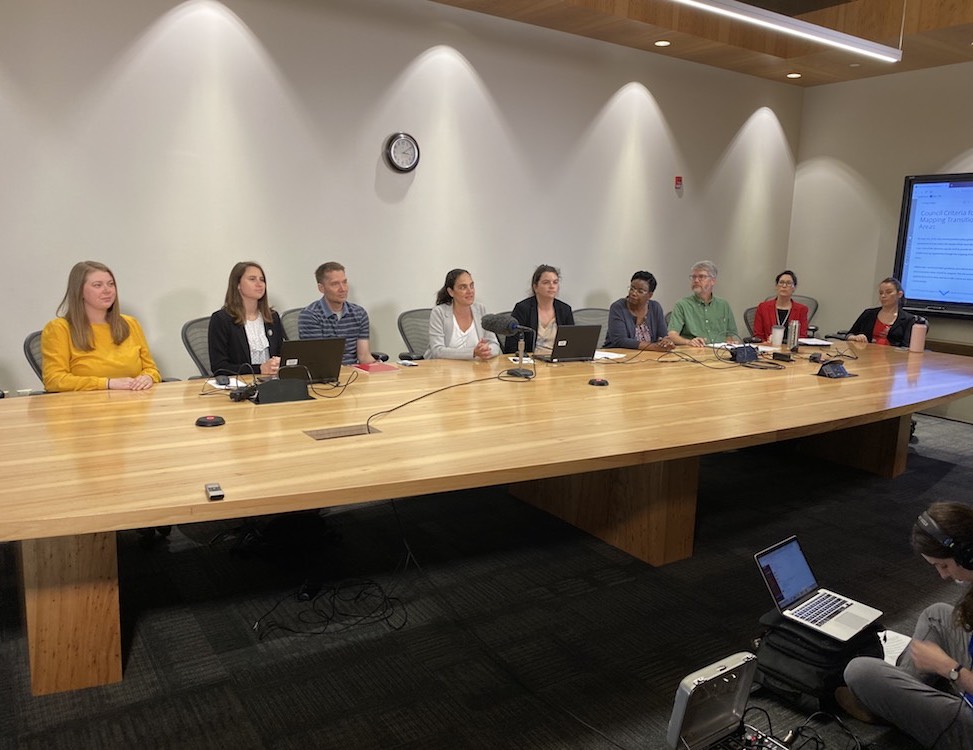CodeNotNEXT Drops
First draft of new Land Development Code revision hits the street
By Austin Sanders, 4:45PM, Fri. Oct. 4, 2019

Late in the afternoon on Friday, Oct. 4, as Austin City Limits festgoers poured into Zilker Park, city staff released the first draft of the Land Development Code revision, itself the second attempt at updating Austin’s unloved, decades-old land use regulations for the city in which we now live.
Your Chronicle team has not yet had a chance to go over the document that closely, but it appears that staff adhered closely to the policy direction on key areas provided by City Council in May. Notably, the code draft does not shy away from identifying transition zones throughout the city – intended as buffer zones that gradually increase in density between residential neighborhoods and the mixed-use centers and transit priority roadways that can better support a greater mix of housing, employment, and services. (These account for roughly 2% of land area on the proposed citywide zoning map.)
City Development Officer Brent Lloyd said these transition zones – or “missing middle” zones – would not require owners of single-family homes to demolish those homes to make way for more units. Contrary to what staff initially suggested at a Council work session this summer, homeowners would be allowed to rebuild existing single-family homes on transition-zone lots, if done by choice or after a natural disaster. However, once a property is rebuilt at any point to be a multi-unit structure, the lot would not be allowed to go back to single family.
The revised code is expected to help achieve the lofty goals set out in Austin’s Strategic Mobility Plan and Strategic Housing Blueprint: a 50-50 split between commuters driving and public transit, and an increase in the city’s housing stock of 135,000 units. Part of the way the city gets there, Lloyd said at a press briefing introducing the code to reporters, is through revised code, which allows for more, small, “house-scale” developments in the transition zones.
“(The proposed code) helps to provide housing for a range of income levels,” Lloyd said, “and while housing capacity is only one element of the affordability crisis, it is an element, and one zoning codes are well equipped to address.”
The code also expands the range of the city’s density bonus programs, which incentivize developers to build more income-restricted housing units into their projects in exchange for increased height allowances, reduced parking requirements, and other benefits. Staff could not say how much of the new code map would be covered by a density bonus program, but Erica Leak of the city housing department said it would be a “significant expansion.”
Leak pointed out that under current code, only about 3% of the city is eligible for some kind of density bonus, but the proposed code would offer some kind of affordability program – varying in incentives by location – throughout the city. “In the lowest-scale zone” – which allows up to two units, comparable to existing SF-3 zoning – “there is not a bonus (program),” Leak told reporters.”But in almost every zone there is some kind of affordable housing density bonus.”
The proposed code also includes significant changes to parking requirements throughout the city, especially in transition zones. In those areas, parking will be optional (other than for ADA-accessible units, as required by federal law), provided developments meet certain requirements, such as ensuring that sidewalks are able to connect pedestrians to the nearest transit corridor. If such a sidewalk doesn’t exist, the parking requirements are reduced by half rather than eliminated.
Now, we wait for elected officials, advocates, and the general public to consume the hefty code revision – not quite as massive as the near-1,400-page third and final (and fatal) draft of CodeNEXT, but still voluminous – and offer their input. The LDC revision team is filling up its calendar with community engagement sessions, including public hearings at CIty Council and the Planning Commission, public testing, open houses and office hours.
From there, the new code’s various levers will be pulled and knobs turned to tweak its changes in a way that satisfies as many members of Council as possible, with hopes that a vote will be taken (perhaps on first reading only) in the coming months. “We’re confident in the quality of the product we put out,” Lloyd told us as staff was leaving the press briefing. “We just have to see how the public planning process plays out from here.”
Got something to say on the subject? Send a letter to the editor.
A note to readers: Bold and uncensored, The Austin Chronicle has been Austin’s independent news source for over 40 years, expressing the community’s political and environmental concerns and supporting its active cultural scene. Now more than ever, we need your support to continue supplying Austin with independent, free press. If real news is important to you, please consider making a donation of $5, $10 or whatever you can afford, to help keep our journalism on stands.
June 6, 2025
June 3, 2025
Land Development Code, CodeNEXT, Strategic Mobility Plan, Housing Strategic Blueprint, Austin City Council, Transition Zones, accessory dwelling units








